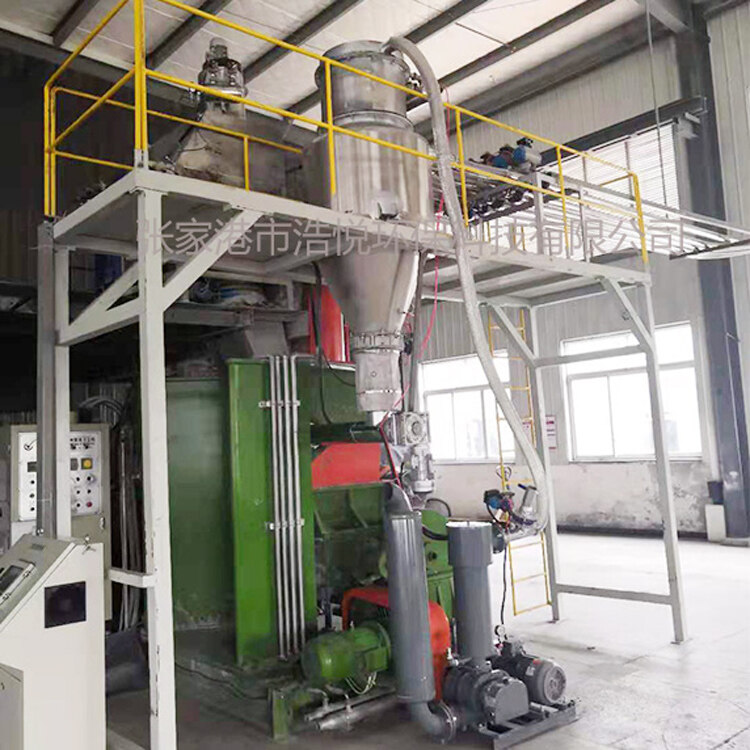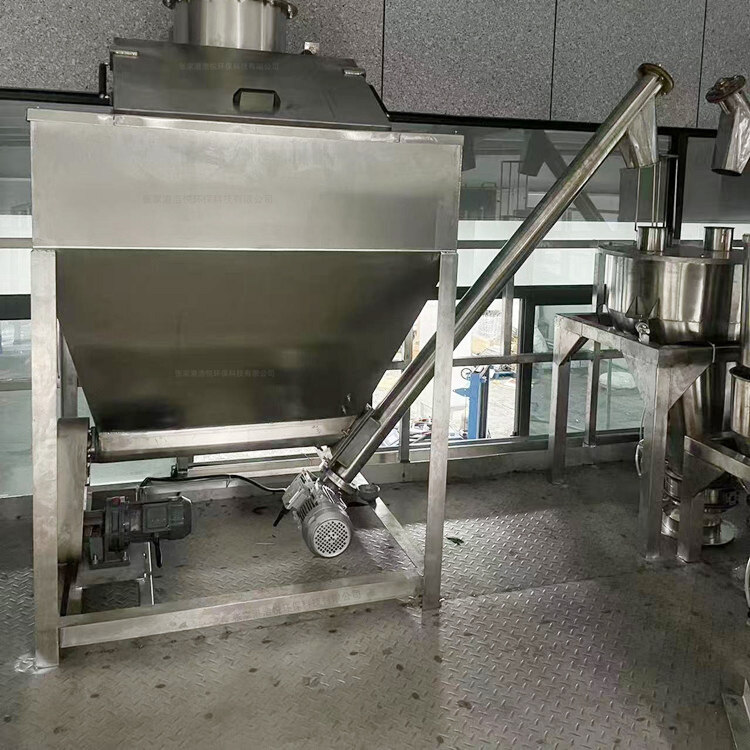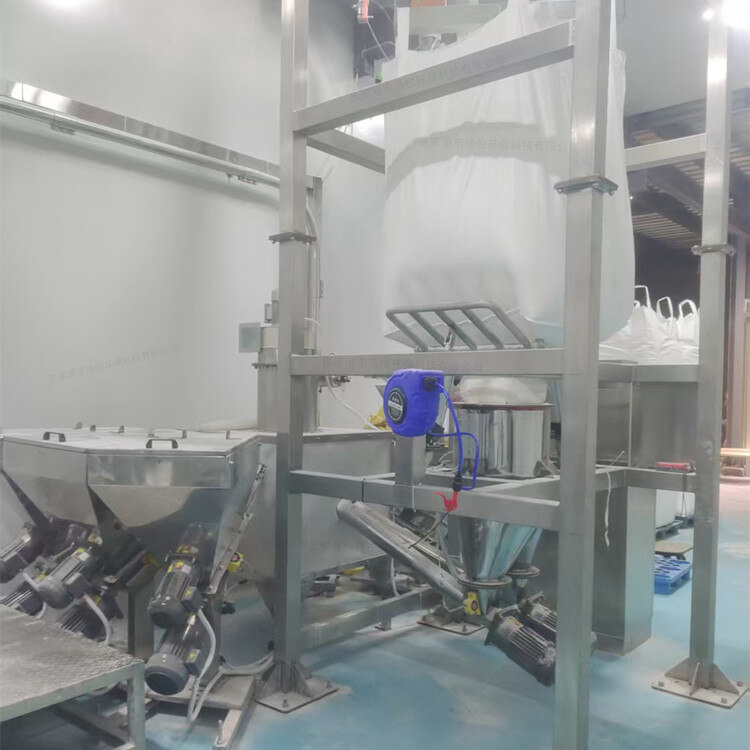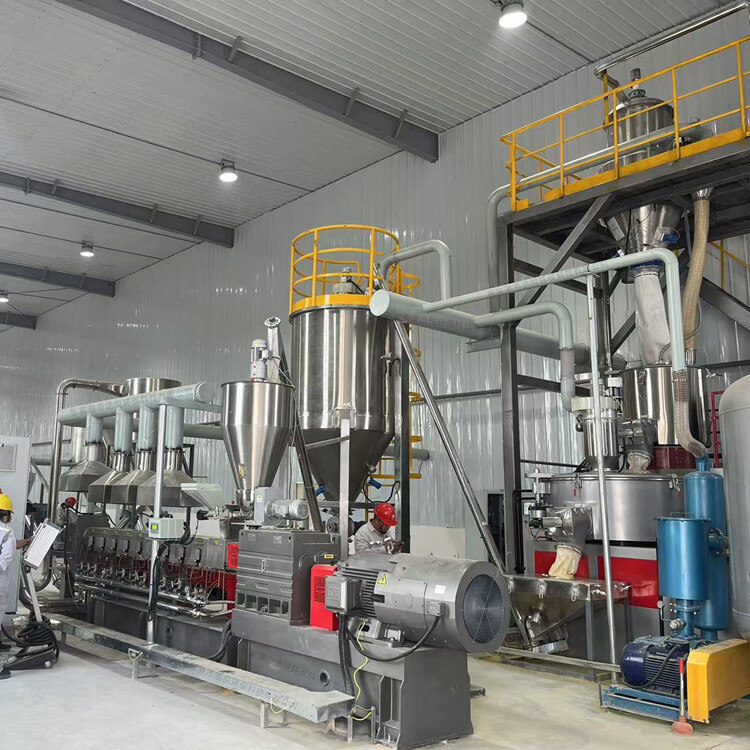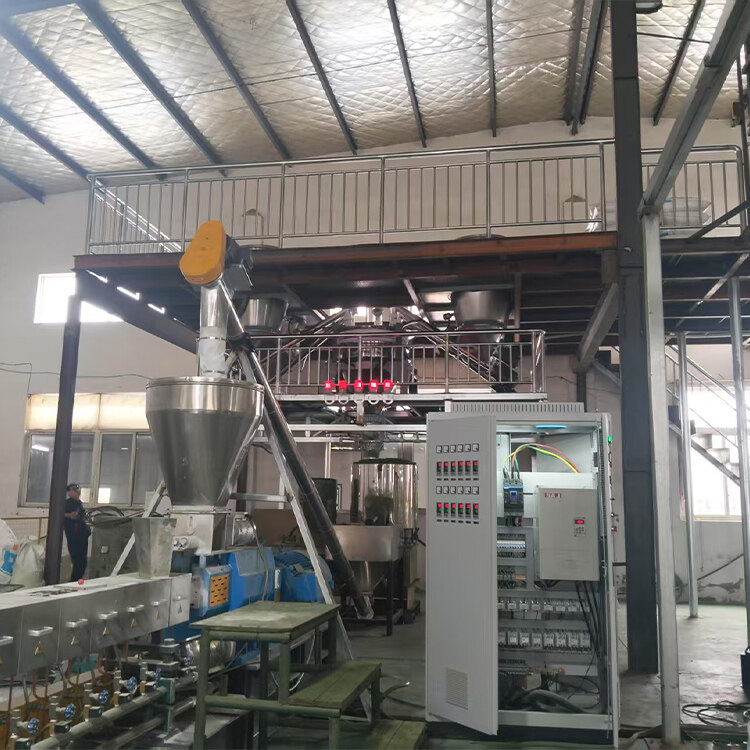- Introduction to automatic batching machine and fully automatic batching machine equipment
- The powder metering system tells you about the introduction of the mixing and drying machine
- 1000kg vacuum feeding machine
- Fully automatic small material batching system
- Research on Innovation of Automatic Weighing Machine Technology
- Design and operation of automatic batching system using PLC, industrial computer and frequency converter
Automatic batching system for internal mixer
- Category:Batching Plant
- Hits:105次
- Release Date:2025-06-30
- Share:
- Inquiry
- Details
In the mixing production of polymer materials such as rubber and plastic, the precision of the material ratio of the internal mixer, as the core equipment, directly affects the product quality. The automatic batching system of the internal mixer has emerged, which achieves precise measurement and efficient transportation of various materials such as raw rubber, carbon black, and additives through automation and intelligent technology. It works in conjunction with the internal mixer, significantly improving production efficiency and product stability. The following will provide a comprehensive introduction to the automatic batching system of the internal mixer from the aspects of system composition, working principle, technical advantages, application scenarios, and development trends.
1、 System composition architecture
The automatic batching system of the internal mixer mainly consists of five parts: material storage unit, precision measuring unit, intelligent conveying unit, central control unit, and auxiliary support unit. Each part works closely together to form a complete automated batching system.
(1) Material storage unit
This unit provides independent storage space for multiple materials and adopts differentiated design based on material characteristics. Raw rubber and other bulk materials are stored in dedicated silos, equipped with automatic cutting devices for easy subsequent transportation; Powdered materials such as carbon black and calcium carbonate are stored in sealed silos, with level sensors installed to monitor inventory in real-time and dust removal devices installed to prevent dust from escaping; Liquid additives are stored in temperature controlled storage tanks to avoid affecting their performance due to temperature changes. Each material warehouse is independent of each other to prevent cross contamination.
(2) Precision measurement unit
The measuring unit is the core of achieving high-precision batching. Multiple measurement methods are used to combine different material characteristics: block materials are linked with high-precision weighing sensors and cutting devices to achieve precise weight control; Powdered materials are measured using weight loss scales or spiral scales. By monitoring the weight changes of the materials in real time and adjusting the screw speed, the measurement error is controlled within ± 0.5%; For liquid additives, volumetric metering pumps or mass flow meters are used to achieve precise micro addition with an accuracy of ± 0.1%.
(3) Intelligent conveying unit
The conveying unit is responsible for quickly and stably conveying the measured materials to the internal mixer. Select the appropriate method based on the material form: Powder materials are transported by pneumatic conveying or vacuum feeding to prevent dust leakage; Block materials are transported through belt conveyors or chain conveyors; Liquid additives are pumped through pipelines. All conveying pipelines adopt a quick detachable design for easy cleaning and maintenance, and are equipped with anti clogging detection devices to ensure smooth conveying process.
(4) Central control unit
Using PLC (Programmable Logic Controller) or industrial computer as the core, combined with customized ingredient control software. The operator inputs the mixing formula through the human-machine interface (HMI), and the system automatically analyzes the material ratio, feeding sequence, and time parameters. During operation, real-time collection of sensor data from the measuring unit and conveying unit is carried out, and the operating status of the equipment is automatically adjusted through algorithms to ensure ingredient accuracy; Simultaneously equipped with fault diagnosis, alarm prompts, and data recording functions, it facilitates production management and quality traceability.
(5) Auxiliary support unit
Including dust removal system, automatic cleaning device, and safety protection equipment. The dust removal system is equipped with suction ports in the material storage and transportation process to reduce dust pollution in the workshop; The automatic cleaning device regularly cleans the conveying pipeline and measuring equipment to prevent material residue; Safety protection devices such as emergency stop buttons and overload protection switches ensure the safety of equipment and personnel.
2、 Working principle and process
When the operator inputs the mixing formula into the central control unit, the system first activates the feeding device of the material storage unit to transport the material to the metering unit. The measuring unit accurately weighs or measures the amount of material based on the preset measurement value, and stops feeding when the set value is reached. Subsequently, the intelligent conveying unit transports different materials to the feeding port of the mixer in the set sequence and time. During the transportation process, the central control unit continuously monitors the data of each link. Once there is a measurement deviation or transportation failure, the automatic correction program or alarm will be immediately activated. After all the materials are added to the mixer, the system records the batching data for this batch, preparing for the next production. The entire process does not require manual intervention and achieves fully automated operation.
3、 Core technological advantages
(1) High precision measurement control
Through advanced sensor technology and dynamic compensation algorithms, we overcome the influence of material characteristics (such as fluidity and density changes) and environmental factors (such as temperature and pressure fluctuations) on measurement, ensure accurate proportioning of multiple materials, improve the stability of rubber mixing quality, and reduce product defect rates caused by ingredient errors.
(2) Efficient and automated operation
Replacing traditional manual batching methods, significantly reducing batching time, seamlessly integrating with internal mixers, and improving production continuity. The system can operate 24 hours a day without interruption, coupled with automatic feeding and cleaning functions, significantly reducing labor costs and improving enterprise production efficiency.
(3) Flexible formula management
Support storage and quick switching of hundreds of formulas to meet the needs of multi variety and small batch production. Enterprises can adjust product formulas in a timely manner according to market changes, and ensure the security of core formula data through permission management functions.
(4) Data management and analysis
Automatically record data such as material type, quantity, and time for each batch of ingredients, and generate visual reports. By analyzing data, optimizing ingredient process parameters, predicting equipment maintenance cycles, and providing data support for enterprise decision-making.
4、 Application scenarios
(1) Tire manufacturing industry
In tire production, the automatic batching system precisely controls the ratio of natural rubber, synthetic rubber, carbon black, sulfur and other materials to ensure that the strength, wear resistance and other properties of the mixed rubber meet the standards, improve the quality and production efficiency of tire products, and help enterprises meet the high standard requirements of the automotive industry for tires.
(2) Rubber products industry
For the production of rubber pipes, sealing rings, tapes and other products, the system realizes the precise addition of various additives in small amounts, improves the elasticity, weather resistance and corrosion resistance of rubber products, and enhances the market competitiveness of products.
(3) Plastic processing industry
In the production process of modified plastics, the automatic batching system accurately measures basic resins, flame retardants, antioxidants and other materials, helping enterprises produce high-performance plastic products that meet the needs of different fields, such as automotive interior parts, electronic and electrical casings, etc.
5、 Development Trends
In the future, the automatic batching system of the internal mixer will develop towards intelligence, integration, and green direction. In terms of intelligence, introducing artificial intelligence algorithms to achieve self-learning and adaptive adjustment of equipment, and automatically optimizing ingredient parameters based on production data; In terms of integration, it deeply integrates with enterprise ERP (Enterprise Resource Planning) and MES (Manufacturing Execution System) to achieve collaborative management of production planning, material inventory, and ingredient operations; Greening is reflected in reducing energy consumption, reducing dust emissions, and using environmentally friendly materials. By optimizing transportation paths and energy-saving designs, it promotes sustainable development in the industry.


